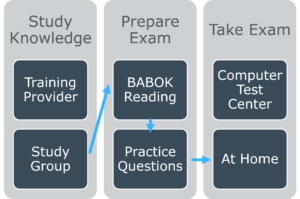Business Analysis | Role or Capability?
I love this question! It opens the door for so many different perspectives (which is key in our line of work). Before we answer this, let’s start with a story.
A recent employer pulled me aside after about 2 weeks on the job (as a contractor) and said “We’ve been told that we don’t need business analysts on this project. I’m curious what your thoughts are on this?” Despite my obvious hesitations with wanting to keep my job and income, I said “That’s probably right. However,…” and I went on to explain that while a person sitting in that role/title isn’t necessary, the function is. It is critical to have someone performing the business analysis activities to ensure a successful solution delivery – digging into and understanding the business and user needs, the problems they are facing, understanding the value that they are seeking, etc. Generally speaking, developers are busy developing, QA engineers are typically busy testing, etc., so someone needs to do it.
I do believe this open and honest discussion is a big reason why I was converted from contractor to permanent employee. They trusted me enough to ask the question and I trusted them enough with a thoughtful answer.
What is a Business Analyst and what do they do?
This is sort of a loaded question in my opinion. There are so many variations out there in the job world. Some people have the title of Business Analyst but don’t really perform typical “BA” activities (as outlined in IIBA knowledge areas). While some have different titles but are neck-deep in the strategy analysis, solution assessments, etc.
The IIBA Defines it as:
The Business Analyst is an agent of change. Business Analysis is a disciplined approach to introducing and managing change in organizations, whether they are for-profit businesses, governments, or non-profits.
The global community on Wikipedia defines it as:
A business analyst (BA) is a person who analyzes and documents the market environment, processes, or systems of businesses.
When talking to family and friends, I usually describe it as “I work with people and teams to understand what they need, want, and why. What problems they have and how they currently go about solving those problems. So that I can help define possible solutions. The solution could be new technology, a new process, new data reporting, organizational structure, etc.” While most of us know that there is a LOT more to it than this, that’s a decent elevator pitch to those who truly have a minimal-to-no understanding of the function.
Why is there so much confusion about BA’s? Let’s take a closer look:
Can you have the BA title but do something else?
Yes, you can. While there are market standards, companies are free to title jobs in any way that fits their organization. At times, these titles may not match with the wider job market. Because of this, there are situations where people do get the title of Business Analyst but aren’t performing the typical “business analysis” activities. This can create a lot of confusion and headache at time of job searching for both candidate and employer.
Can you perform BA duties and not have the BA title?
Also, yes. In many cases, people are performing Business Analysis activities while having other job titles – and some have no idea that what they’re doing is considered business analysis. For example:
- Have you ever investigated potential tools to use for a project or need?
- Have you ever helped your team/a team define problems they have with a current process?
- Have you yourself identified problems with a current process and defined a new one that would address issues/gaps?
- Have you help identify individuals that may be impacted by an upcoming change?
- Have you helped to facilitate a brainstorming session?
- Have you done a current-to-future state analysis?
- Have you made a process flow to articulate how something is done?
Guess what…each of these are business analysis activities. And frankly speaking, most of us in a professional setting has performed these activities before. And in most cases, regularly!
So even if you don’t have a title of Business Analyst, you probably still have the experience!
Circling back to the original question: Role or Capability?
The answer is both – it can be a role and a capability.
While I believe having the business analysis capability is far more critical than a title, sometimes if feels good to be able to call yourself a business analyst as well.
Set your project up for success and make sure you have someone performing business analysis activities (even if you must call them something different)!






